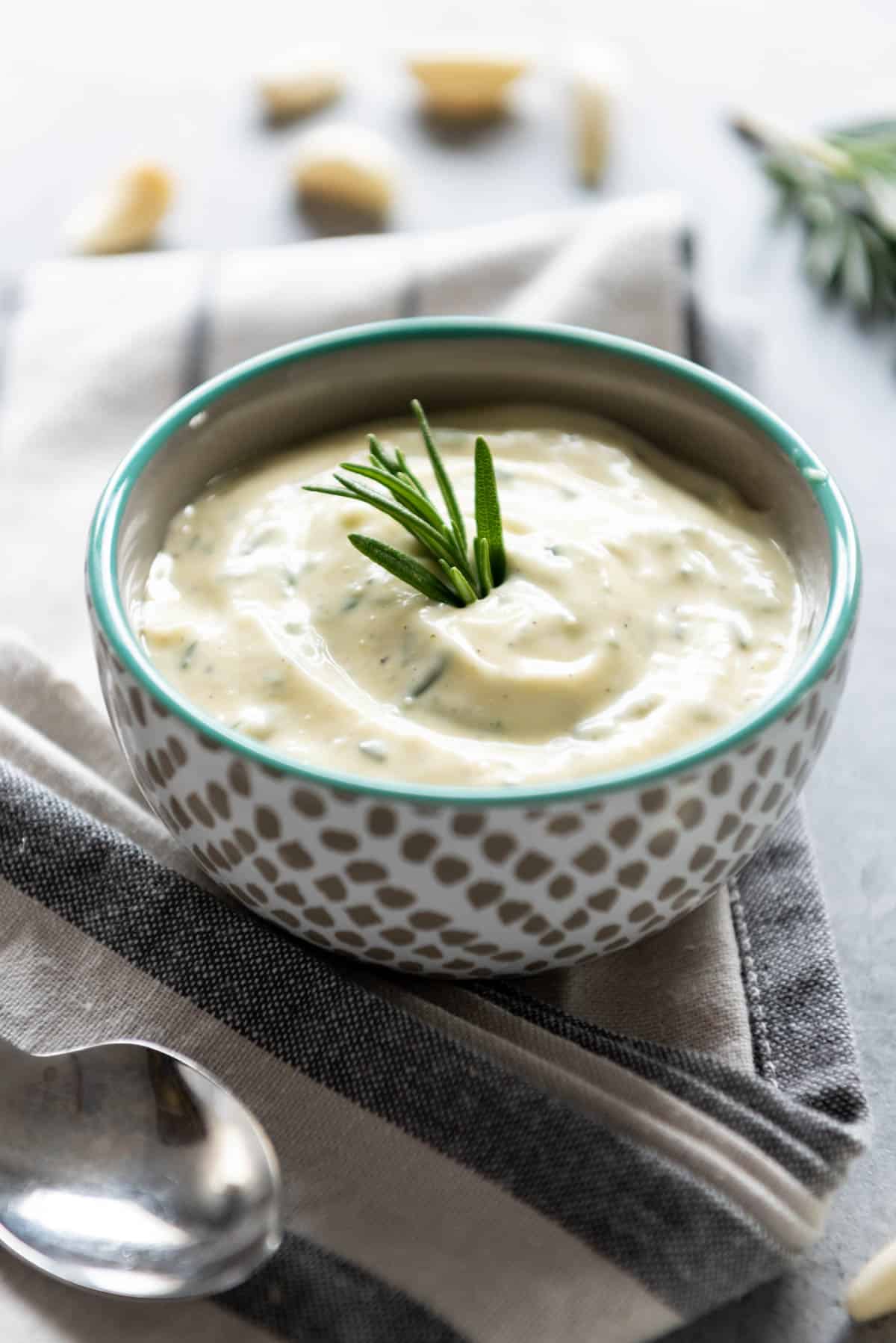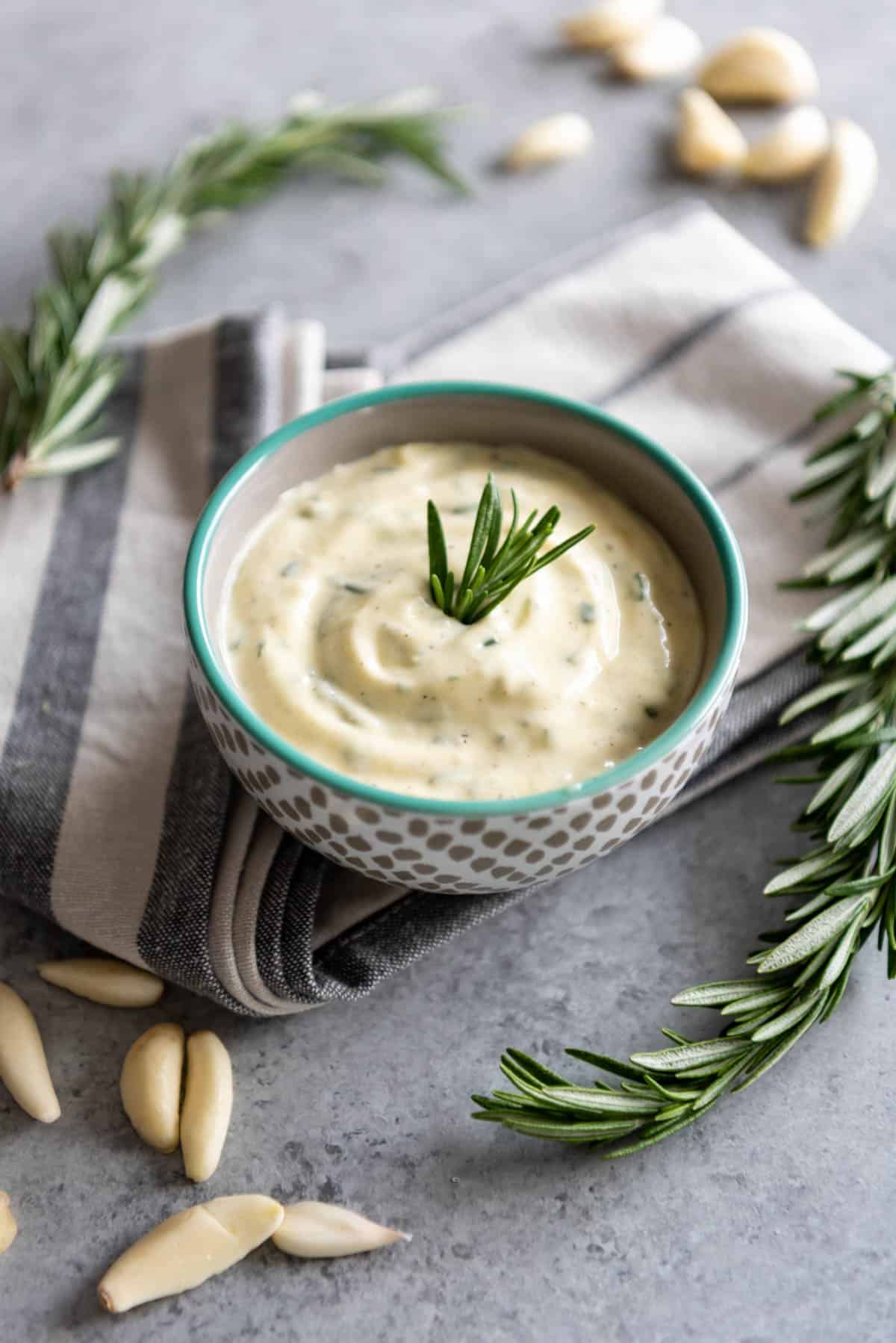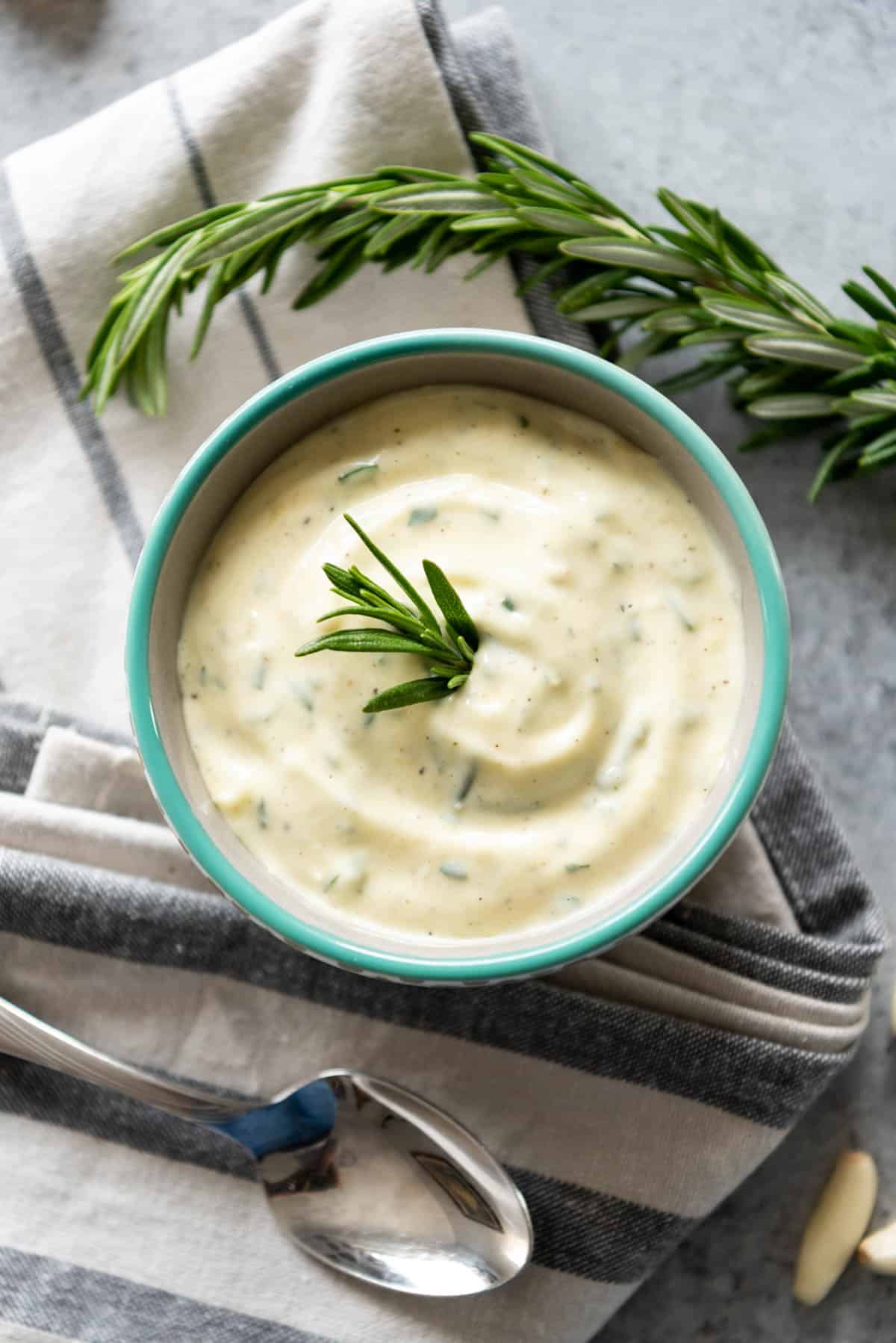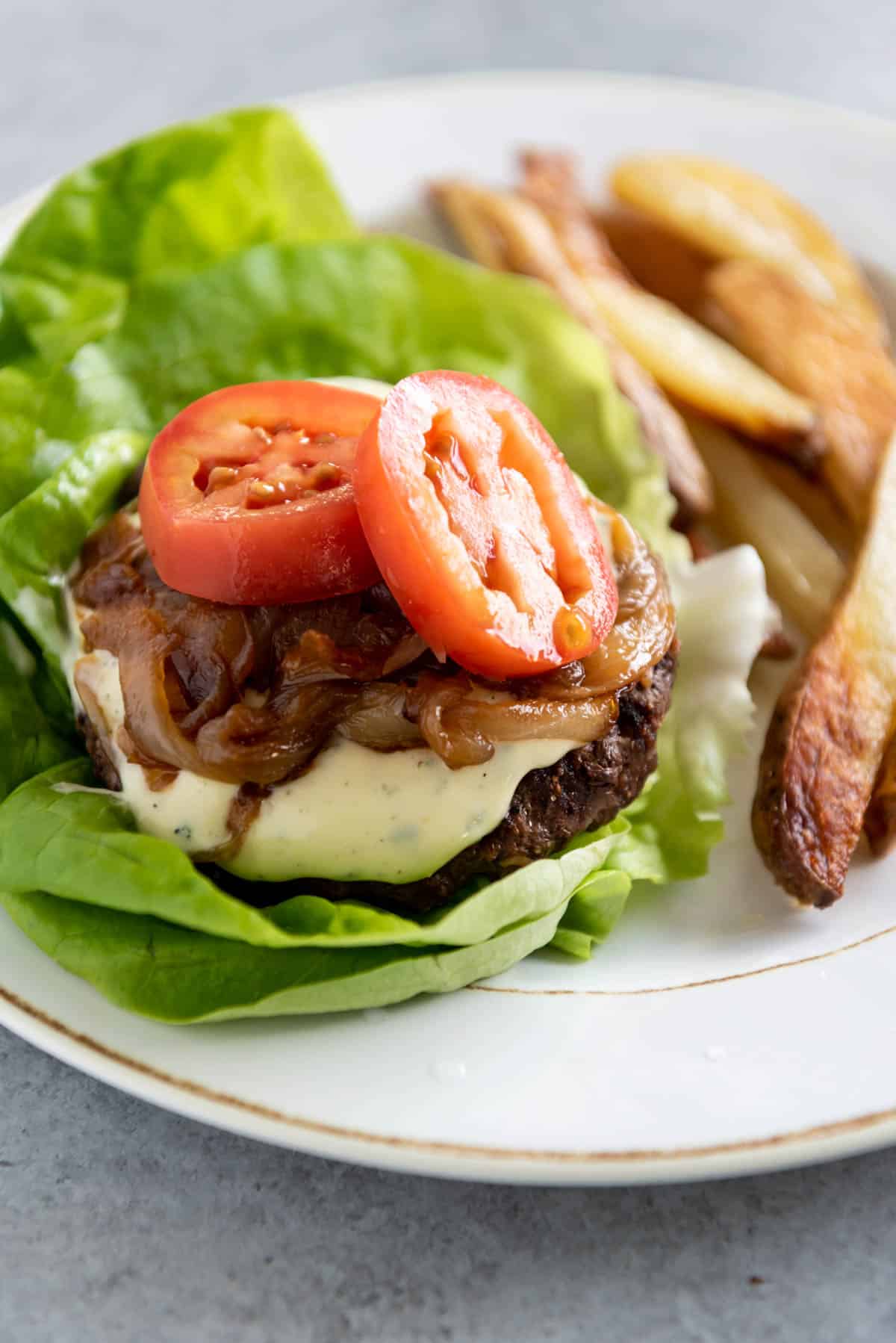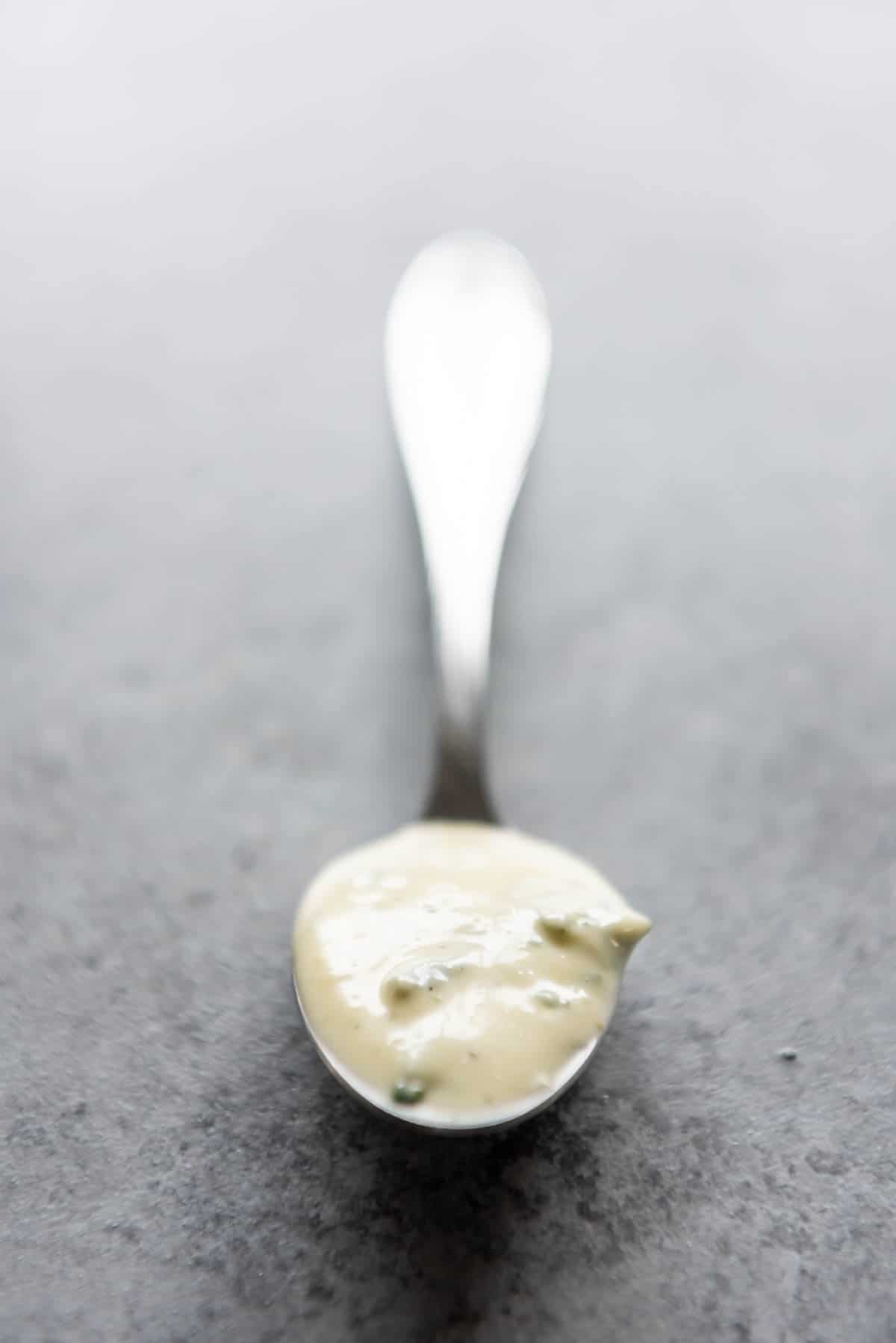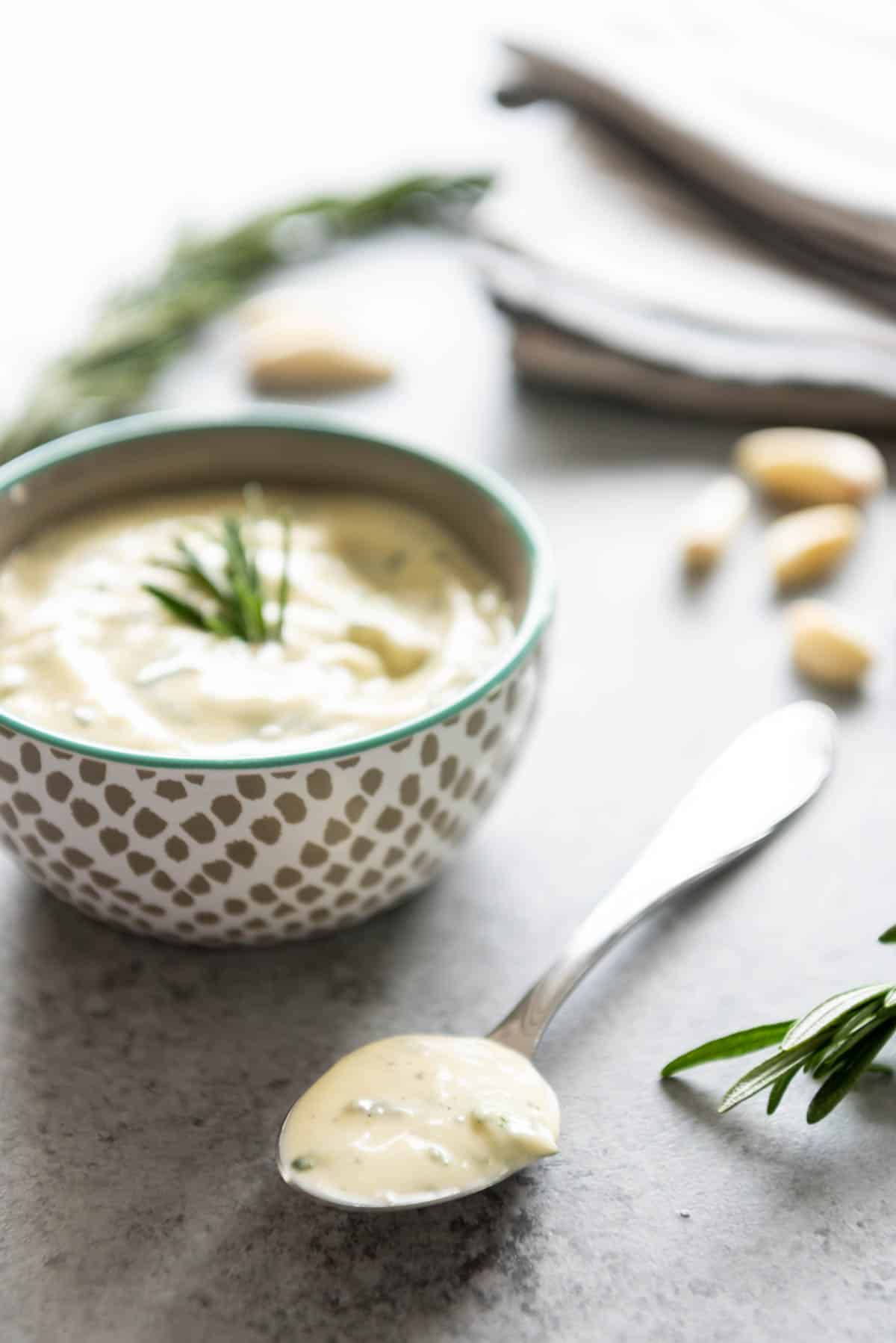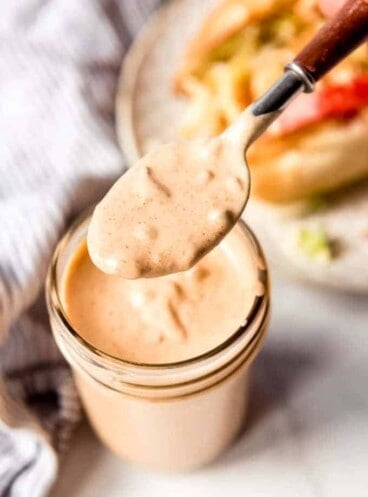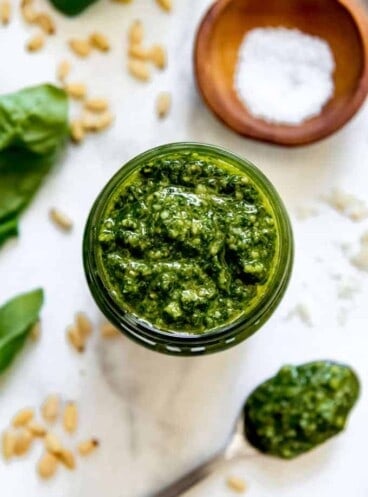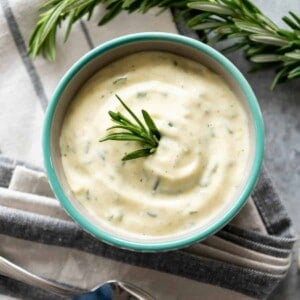If I am being completely honest, I feel like such a gourmet whenever I order something off a menu that has aioli on it. It’s silly, I know, when in reality, aioli is pretty much just a fancy name for what is essentially just flavored mayonnaise, thinned out a bit with a little acid like lemon juice and with fresh herbs or spices stirred in. If you look up aioli recipes online, you will find lots of recipes that basically tell you to do just that – stir in a few extra ingredients to a cup of mayo and call it good. But trust me, homemade aioli made from scratch is so, so, so much better. This classic aioli recipe is one of those things where you can really taste the freshness and quality of the ingredients and it literally comes together in just minutes. This garlic aioli recipe is my go-to base recipe with plenty of variations so you can change up the flavor to your liking.
What is aioli sauce made of?
At it’s simplest, an aioli recipe starts with egg yolks and olive oil which is seasoned with a little lemon juice, a generous pinch of salt, maybe a little dijon mustard, and most often garlic. The two liquids are emulsified together so they don’t separate over time.
What You’ll Need
Scroll down to the recipe card below this post for ingredient quantities and full instructions.
Egg yolks Extra virgin olive oil Fresh garlic – This is one instance where garlic powder just won’t do. Even purchased garlic paste doesn’t have the same impact. For really great garlic flavor you should buy a bulb of garlic and peel and mince a few large garlic cloves. Kosher salt Fresh lemon juice – This is my secret ingredient for keeping this easy aioli recipe bright and fresh tasting without turning it lemony. If you want even more lemon flavor, be sure to zest your lemon first and add that to your base.
How to Make Aioli
Add the raw egg yolks to your food processor (affiliate link) or blender along with the minced raw garlic, dry mustard, salt, and lemon juice. With the blades running, slowly drizzle the olive oil into the egg yolks in a thin stream over a period of 1-2 minutes. The liquid will gradually emulsify as the steady stream of olive oil incorporates into the egg yolks creating a thick, creamy aioli. Add additional mix-ins like herbs, spices, etc. and pulse to combine.
How to Store
Aioli will keep in the fridge for about 1-2 weeks in an airtight container. Don’t leave it out at room temperature for longer than 1-2 hours.
Can you freeze aioli?
No, like most oil-based condiments, you can’t freeze aioli or it will separate when it thaws.
Aioli Variations
My favorite aioli sauces tend to be the garlicky variety, but you don’t have to include the garlic at all in aioli if it’s not your thing. I have included a few of my favorite aioli variations below, rather than post what is essentially the same recipe over and over, but you can really add whatever mix-ins you like to make your own unique aioli.
Roasted Garlic (use this tutorial for how to roast a whole head of garlic) Garlic & Chive Southwest Chipotle Rosemary Garlic (pictured in the photos in this post) Basil Garlic Sundried Tomato & Basil Cilantro Lime Cajun Spicy Aioli Red Pepper Aioli
Other possible mix-ins would be garam masala, fresh dill or thyme, jalapeno, avocado, sriracha, black pepper, cranberry sauce with orange zest, etc. The sky is pretty much the limit!
How do you use aioli?
There are so many delicious ways to serve up a batch of freshly made garlic aioli! We like to put aioli on sandwiches or burgers like the rosemary garlic aioli on a lettuce-wrap burger with caramelized onions in the picture below. It’s incredible on grilled or pan-seared chicken breasts or with crab cakes. Or you could make a cranberry or sundried tomato & basil aioli to spread on a turkey sandwich (one of Paul’s favorite things). It’s also wonderful as a dipping sauce for fries (like these Oven Roasted Barbecue Potato Wedges or homemade french fries!) or chicken tenders or meatballs. You can even use it as a marinade for meat before grilling. It’s so versatile!
Tips for Success
I have made aioli with both a Vitamix blender and a food processor and it came out just fine both ways, although I think that the food processor was a little easier. You can use an immersion blender to make aioli by combining the egg yolks and oil in a mason jar, then blending until emulsified. It’s slightly easier than using a food process or blender, but not as many people have immersion blenders (I just got one fairly recently myself) and my favorite way is still using my food processor (affiliate link).
More Sauce Recipes
Greek Tzatziki Sauce Outback Blooming Onion Sauce Ranchero Sauce Creamy Cilantro Lime Dressing
More Favorites from House of Nash Eats
This post was originally published in January, 2017. The content was updated in September, 2022.
Homemade Remoulade
Homemade Basil Pesto Recipe
Hollandaise
Let me know what you thought with a comment and rating below. You can also take a picture and tag me on Instagram @houseofnasheats or share it on the Pinterest pin so I can see.

